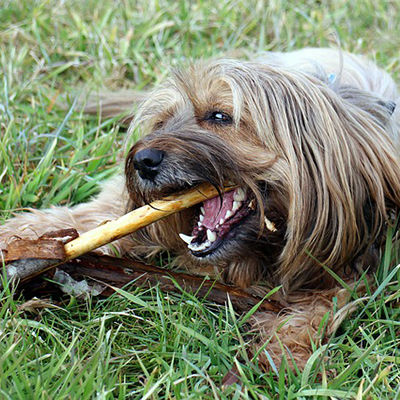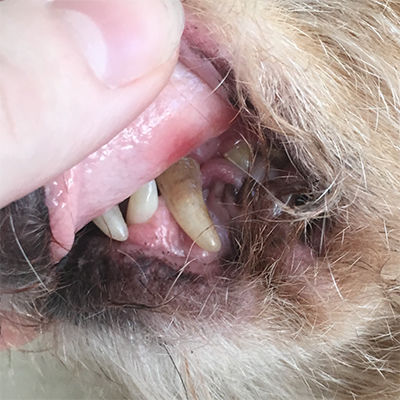Is Your Dog Carrying Deadly Bacteria? Signs of Dental Disease in Dogs
 Chances are that if you spent years not brushing your teeth, you would have a dingy smile, a painful mouth, a very stern dentist. And yet many pet owners go years without caring for the pets’ teeth. Although it may seem unnecessary to treat your dog’s teeth the way you treat your own, dogs are at just as much risk for developing peritonitis when bacteria accumulate in their mouths. So although it can be difficult to tell when your canine companion is having trouble with his teeth, early detection is key to preventing an unhealthy and unhappy pup. So what signs of dental disease should you look for in your dog?
Chances are that if you spent years not brushing your teeth, you would have a dingy smile, a painful mouth, a very stern dentist. And yet many pet owners go years without caring for the pets’ teeth. Although it may seem unnecessary to treat your dog’s teeth the way you treat your own, dogs are at just as much risk for developing peritonitis when bacteria accumulate in their mouths. So although it can be difficult to tell when your canine companion is having trouble with his teeth, early detection is key to preventing an unhealthy and unhappy pup. So what signs of dental disease should you look for in your dog?
Bad Breath
We all know the smell of wet dog, but do you know the smell of bad dog breath? If you’re starting to notice that you are pushing your dog back from your face or that their normally welcome licks are curling your nose, this may be a sign of dental decay.
Inflamed Gums
Open your dog’s mouth sometime and take a look inside: are the gums red or swollen? If so, your dog likely has gingivitis. This disease is caused by bacteria gathering around the gum line and the roots of the teeth. If left untreated, gingivitis can lead to tooth loss and bone degeneration.
Swollen Jaw
If your dog’s dental disease has progressed, you may notice swelling in his jaw. This can be caused by bacteria gathering around the root of a tooth and creating an abscess. You will then notice a lump near your dog’s neck or near his eye socket. If the abscess is left untreated it may grow and burst, at which point you may see pus on his skin.

Trouble chewing
Have you noticed that your dog is either eating less or that he has stopped chewing his food? If your dog is gulping down his kibble, it may be a sign of a loose or missing tooth or major jaw pain. Open your dog’s mouth and you may notice a sign of rot, or see spaces where the missing teeth once were.
Sneezing
This one may come as a surprise, but a sneezy dog might not have a cold! Infections in a dog’s upper jaw can spread to his sinus cavities, leading to sinus infections and sneezing.
You can prevent your pet’s dental decay before these warning signs and symptoms are evident by taking them for regular checkups. The earlier a problem is detected, the less expensive and dangerous the problem will become. Preventative care can save you from future headaches— and it can save your dog from future toothaches!